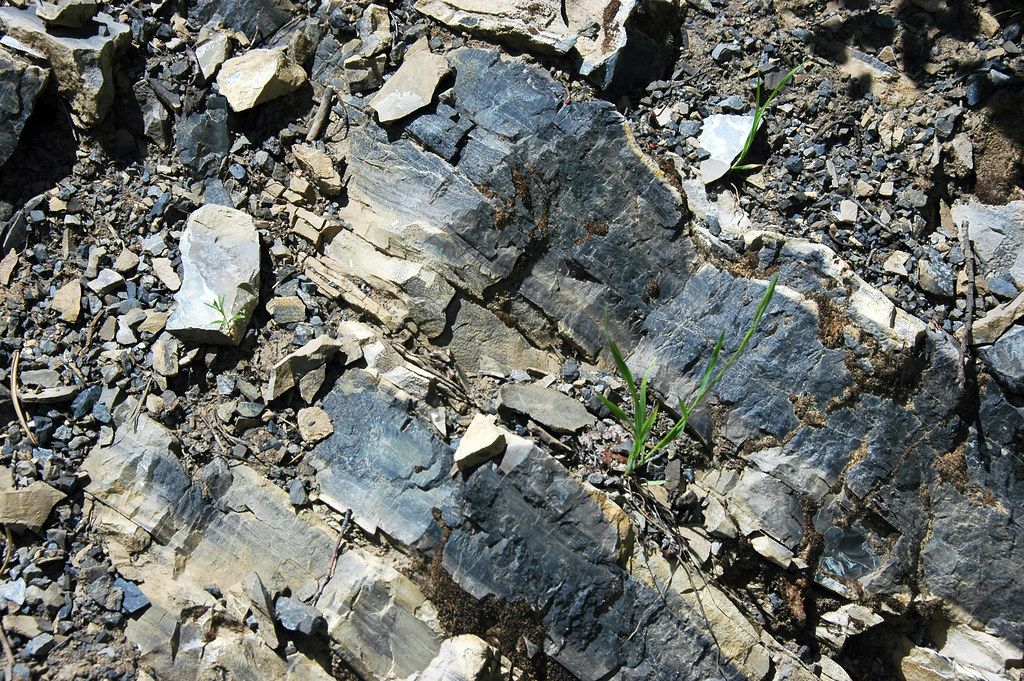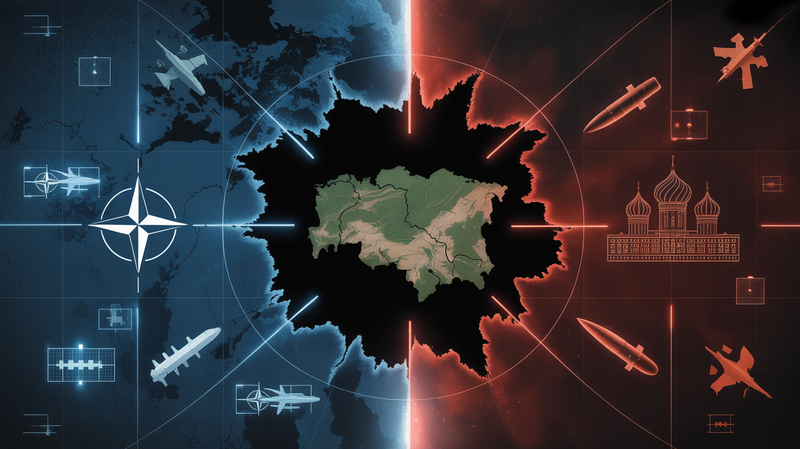Estonia's Subterranean Wealth: Geopolitics, Ethics, and the Future of Critical Resources
Estonia's Underground Treasure: The Dawn of a New Era Nestled in the northeastern pocket of Europe, Estonia, often celebrated for its digital advancements and pristine nature, conceals an unparalleled wealth beneath its terrains. A treasure trove of critical raw materials, both recognized and potential, promises to redefine its

Estonia's Underground Treasure: The Dawn of a New Era
Nestled in the northeastern pocket of Europe, Estonia, often celebrated for its digital advancements and pristine nature, conceals an unparalleled wealth beneath its terrains. A treasure trove of critical raw materials, both recognized and potential, promises to redefine its geopolitical significance and economic trajectory.
The Enigma of Phosphorite
Harboring the European Union's largest phosphorite reserves, Estonia boasts an estimated 9.6 billion tons of this valuable mineral. However, the journey towards its full utilization is riddled with hurdles, be it environmental concerns, socio-economic constraints, or the sporadic nature of phosphorite quality.
While traditionally, the phosphorite's phosphorus content, a primary ingredient for fertilizers, has been the center of attraction, its composition unveils another story. Hidden within are substantial amounts of rare earth metals like cerium, praseodymium, neodymium, dysprosium, and terbium. This positions Estonia's phosphorite not only as a potential fertilizer powerhouse but also as a critical source for these coveted metals in the future.
Graptolite Argillite: The Dark Horse
Further enriching Estonia's subterranean assets is the presence of over 60 billion tons of Graptolite Argillite. This dark shale is a treasure chest brimming with uranium, molybdenum, vanadium, and other metals, not excluding gold, rhenium, and platinum. Particularly noteworthy is the "battery metal," vanadium, foreseen to witness an explosive demand surge on the global stage, owing to its potential in energy storage technologies.
The Cruciality of Critical Raw Materials
As the European Union strategizes its economic and technological advancements, certain natural resources take center stage due to their strategic importance and high supply risks. Both phosphorite and the rare earth metals found within it have earned their place among the EU's top 20 critical raw materials.
These critical resources are the linchpins enabling cutting-edge technological solutions. The green transition, the cornerstone of the future, is inconceivable without the presence of these rare earth metals. Essential components of wind turbines and solar panels, they form the backbone of sustainable energy solutions. A staggering 10% of the world's production of neodymium and praseodymium finds its way into wind turbines alone. Furthermore, the ongoing "battery revolution," driven by the intent to curb greenhouse gas emissions and augment renewable energy storage capacities, amplifies the demand for these essential materials.
The Preamble to Estonia's Choice
As Estonia stands on the precipice of monumental decisions, it grapples with its newfound significance, potential rewards, and the inevitable challenges. The reserves are not just minerals; they represent choices, futures, and the delicate balance between prosperity and preservation. This preamble sets the stage for a narrative of decisions, ethics, geopolitics, and the very essence of Estonia in the modern world.
Estonian Phosphorite: An Untapped Potential and the Suspicion of External Interest
The interplay of geopolitics and natural resources has often governed the destiny of nations. The case of Estonia's vast, untapped phosphorite reserves is no different.
A Rare Gem Beneath the Ground
Estonia's unique geological position grants it the largest unexploited sedimentary phosphate rock reserves within the European Union. What sets Estonian phosphorite apart from others is its remarkably low cadmium (Cd) and trace uranium (U) content, making it an environmental and health-friendly choice. Additionally, these reserves contain valuable elements such as rare earth elements (REEs), which are crucial in numerous high-tech applications.
The Historical Backdrop
Phosphorite excavation in Estonia traces back to the 1920s, and over the decades, various beneficiation methods have been explored. The reserves have been both a boon, providing potential economic opportunity, and a challenge, due to concerns regarding the impact on local groundwater resources. Although the phosphate-rich sandstones lie just 5-150 meters beneath the surface, there have been substantial apprehensions regarding groundwater contamination.
The Present Scenario: Questions Raised
In recent times, questions have arisen, driven by suspicions about why Estonia might not be capitalizing on such a prized resource. Observations have been made, drawing parallels to Ukraine's trajectory, where significant tracts of land and assets were allegedly sold to foreign entities, particularly American companies.
Could Estonia's phosphorite reserves be on a similar trajectory? The suspicion is that these reserves might have already been earmarked or "pledged" to foreign funds, possibly for sale. Such concerns, though speculative, stem from perceived patterns in the state's actions, which seem to echo the Ukrainian scenario.
The Need for Transparency
Given the enormous potential of these reserves, not just economically but also geopolitically, there's an undeniable need for transparency. The European Commission has identified phosphate rock as a critical raw material with significant supply risk. The spotlight on Estonia's reserves is, therefore, only going to intensify.
The question is not just about harnessing a resource but about sovereignty, strategic decision-making, and ensuring that the country's interests are safeguarded. The risk of external entities wielding influence or control over such a vital resource could have long-term implications for Estonia's autonomy and its place on the global stage.
Concluding Thoughts
The world has often witnessed powerful entities vying for control over natural resources, with nations sometimes sidelined in the process. Estonia, with its vast phosphorite reserves, stands at a crossroads. The choices made now will determine whether the country becomes a key player in the global phosphorite market or sees its assets managed from afar.
In any scenario, it's essential that the decisions surrounding these reserves are made with Estonia's long-term welfare in mind. Transparency, robust governance, and safeguarding national interests should be at the forefront of any strategy concerning the country's phosphorite reserves.
Estonia's Philosophical Crossroad: A Question of Identity and Ethical Direction
Historically, nations are not just defined by their geographical boundaries but more profoundly by the choices they make, the values they uphold, and the paths they tread. Estonia, with its enormous phosphorite reserves, is at such a philosophical juncture.
The Ethical Dilemma
While it is tempting to envision the potential economic boom from exploiting these reserves, we must ask: at what cost? The philosophical underpinnings of any society are based on the balance it strikes between economic prosperity and ethical direction. Should a nation's riches be harnessed solely for economic gains, potentially jeopardizing the environment and the well-being of its future generations? Or should it be seen as a guardian of its land, ensuring its natural wealth remains unspoiled for generations to come?
Estonia and the World's Canvas
Every decision Estonia makes does not just reflect its national identity but also positions the nation on the global canvas. By choosing the path of sustainable and responsible use of its phosphorite reserves, Estonia has the opportunity to set a precedent for the world. A message that profits are essential but not at the cost of compromising a nation's soul.
The Mirage of External Interests
The allure of external interest is undeniable. However, the age-old adage holds true: all that glitters is not gold. External entities often come with their interests, sometimes overshadowing the nation's intrinsic values and long-term visions. Estonia must tread carefully, ensuring that it doesn't become just another pawn in the larger geopolitical game.
The People's Role
In democracies, the people are the ultimate custodians of national choices. It's imperative for Estonians to understand the magnitude of the decisions that lie ahead and actively participate in shaping their nation's future. Only a well-informed and engaged citizenry can ensure that the nation's soul remains undiluted and its path remains true to its core values.
Epilogue: The Path Ahead
Estonia's phosphorite story is not just about minerals buried beneath the ground; it's a tale of a nation's soul, its ethical compass, and its place in the world. The decisions made today will reverberate through the annals of history, painting a picture of the nation's character and wisdom. It's a story that Estonia pens for itself, but the world watches with bated breath. The hope remains that Estonia's narrative will be one of foresight, integrity, and an unwavering commitment to its people and land.
A Misguided Direction: The Shadow of War Looms Over Estonia's Prosperity
The air in Estonia seems to be thick with tension, an underlying current of unrest that goes beyond mere whispers. The recent article in Postimees on 19th October 2023 has shed light on government intentions that have set the stage for potential disaster. It's not just a question of national interests or economic prospects, but a grave concern about the very soul and essence of Estonia.
Trading Peace for Prosperity?
The magnetic allure of the vast phosphorite reserves could undoubtedly lead Estonia to unparalleled prosperity. Yet, a nagging question remains: at what price? The direction hinted by the government's plans seems to suggest a trajectory that leans heavily towards external influences, and such paths historically have been fraught with tension, conflict, and even war. To unlock prosperity from beneath the ground while compromising peace above is a paradoxical and dangerous gamble.
The Absence of Visionary Leadership
It's disheartening to observe a nation, blessed with such potential, seemingly adrift without visionary leadership. Instead of strategies that elevate the nation and its people, the prevalent narrative seems to be one of submission and myopic gains. While Estonia sits atop a proverbial gold mine, there's a pressing need for minds that can look beyond immediate gratification, minds that consider the long-term welfare of the people and the nation.
A Plea for Enlightenment
Estonia requires luminaries who can envision a future where prosperity does not come at the cost of peace. A leadership that can navigate the intricate maze of geopolitics, external interests, and national priorities, ensuring that the wealth beneath doesn't become a curse above. There's an urgency for voices that speak for the collective, for strategies that resonate with Estonia's core values, and for actions that reflect the will of its people.
Guardians of Estonia's Destiny
Now, more than ever, Estonians need to rally together. The phosphorite reserves are not just a geological asset; they are symbolic of Estonia's choices and its future direction. As the government seemingly veers off-course, it becomes imperative for every Estonian to play their part, to question, to challenge, and to steer the nation back towards a path that ensures prosperity without jeopardizing peace.
In Search of a Brighter Tomorrow
As the dark clouds of potential conflict loom, Estonia stands at an inflection point. The narrative can still change; the path can still be corrected. While the phosphorite reserves promise wealth, the true treasure lies in Estonia's ability to carve a future that ensures lasting peace, prosperity, and pride. The nation's destiny awaits the turn of a page, a chapter where visionary leadership and the collective will of its people chart a course towards a brighter, more secure tomorrow.




